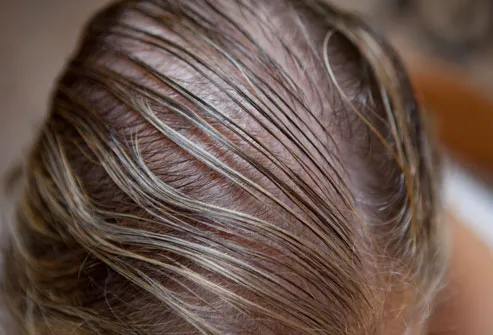Check your skin health using a simple DIY test
The main physiological parameters for normal work of skin cells are their oxygenation and blood supply. Low skin oxygenation (tissue hypoxia) and inadequate blood supply are normal features for acne, eczema, dermatitis, and psoriasis. People with normal oxygenation and circulation never develop these and many other skin problems.

How to find out or measure body oxygenation? After exhalation, observe how long the person can hold their breath without any stress or discomfort. Do the stress-free BHT (breath holding time) test. Here are the steps to follow. After your usual exhalation, pinch the nose, and close the mouth. Hold your breath, but only till the first distress or discomfort. It will appear at certain moment of time and will start to grow. Release your nose and resume breathing exactly at the beginning of this stress. If you do the test correctly, your breathing after the test will be the same as before it.
[Warning. Some, not all, people with heart disease, migraine headaches, and panic attacks may experience negative symptoms minutes later after this light version of the test. If this happens, they should avoid this test.]
Why does circulation influence this test? Should breath holding be only about body oxygenation? Well, if blood supply to tissues is reduced, oxygen delivery will be reduced, and body oxygenation will suffer. Hence, good breath holding abilities are possible only when circulation is good.
Normal values for the breath holding test are about 40-60 s. People with normal breathing parameters can do such breath holds easily. If your result is less than 40 s, your skin circulation and oxygenation are compromised. You need to change your unconscious breathing pattern and correct lifestyle factors which influence oxygenation.
Top lifestyle factors
1. Mouth breathing drastically reduces index of oxygenation! People with normal oxygenation and circulation never breathe through their mouth. First, observe breathing of people with skin problems. It is often heavy, visible (chest movements), and audible (sighing, panting, coughing, yawning, etc.). Breathing of healthy people, who naturally have long breath holding time is invisible and inaudible 24/7, except of course, physical exercise. Second, you can check the effects of mouth breathing yourself. Measure your BHT when you breathe through the nose. Then pinch your nose with a clip and breathe through your mouth for about 20-30 minutes and you will notice that mouth breathing can reduce body oxygenation index (the stress-free breath holding time) by about 30-70%. Note that people do not notice their own mouth breathing. You need to ask somebody else to observe and correct you. Children may do this simple task with no difficulties, especially if you give them a reward later and inform about it now. Hence, breathe only through your nose. If your nose is often blocked, learn the therapy described in the article "The breathing exercise to unblock the nose" (http://www.normalbreathing.com/Articles-unblock-the-nose.php).
2. Mouth breathing during the night can produce devastating health effects. Not only oxygenation and blood supply to the skin and vital organs significantly drops, we can suffer from snoring, sleep apnea, morning fatigue, dry mouth syndrome (dental and oral symptoms), brain oxygen de-saturation, stroke, heart attacks, asthma attacks, and many other serious problems. If your mouth is dry in the morning, learn the mouth taping technique. Mouth breathing is the modern health disaster noticeable in modern people and, especially, children. This phenomenon was very rare 50-100 years ago.
3. When we sleep on the back at night, the breath holding time drops almost 2 times. Again, you can easily check this during the night. Put a ticking clock near your bed so that you can measure your oxygenation without turning on the light. After sleeping on your chest, check the body oxygen stores. Do the same test after spending more than 10 minutes on your back. You will also notice that your breathing, when you sleep on your back, is much heavier. Hence, prevent sleeping on your back, if this is your problem. The therapy is described in "How to prevent sleeping on one's back*" (http://www.normalbreathing.com/Articles-Prevent-sleep-back.php).
These are the most common causes of low body oxygenation in modern people. Other factors are: overeating; stress; lack of physical activity; overheating; nutritional deficiencies (especially, EFAs, folic acid, magnesium, zinc, calcium, and copper); poor posture (slouching); talking too much; talking with deep inhalations; and many others.
There is one holistic therapy which uses the oxygenation index (stress-free breath holding time after usual exhalation), as the main parameter of health of the person. This therapy was developed by Soviet physiologist and Doctor Konstantin Buteyko. The Buteyko breathing method focuses on improving tissue oxygenation. The method has 2 main parts: breathing exercises for better oxygenation and correction or normalization of lifestyle factors.
Doctor Buteyko taught his method to about 200 Soviet and Russian medical professionals. They applied this therapy in practice and helped thousands of people with various health problems.
You can find additional info at the following links:
Click Here for more information
Click Here for more information






 Home
Home Privacy Policy
Privacy Policy Contact us
Contact us
0 التعليقات:
Post a Comment